What's New
Displaying results 4321 - 4330 of 4914
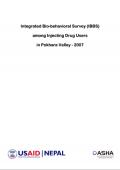
Resource | Publications,
This report details the findings of the third round of IBBS conducted among 300 male IDUs in the Pokhara Valley. The primary objective of this study was to collect strategic information to analyze trends in risk behavior and HIV and STIs among IDUs.

Resource | Publications,
This report details the findings of the third round of the Integrated Biological and Behavioral Surveys (IBBS) conducted among 300 male Injecting Drug Users (IDUs) in the Kathmandu Valley. The primary objective of this study was to collect strategic information to analyze trends in risk behavior and HIV and STIs among IDUs.
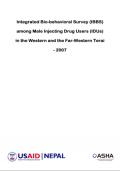
Resource | Publications,
This report details the findings of the second round of Integrated Biological and Behavioral Surveys (IBBS) conducted among 300 male Injecting Drug Users (IDUs) in the Western and Far Western Terai. The primary objective of this study was to collect strategic information needed to analyze trends in risk behavior and HIV/STI infection among IDUs.
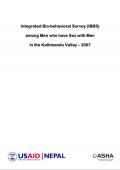
Resource | Publications,
This report documents the findings of the second round of the Integrated Biological and Behavioral Surveys (IBBS) conducted among 400 Men who have Sex with Men (MSM) in the Kathmandu Valley. The primary objective of the study was to collect strategic information to analyze trends in risk behavior and HIV/STI prevalence rates among MSM.
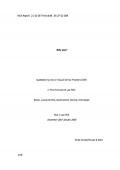
Resource | Publications,
“Why you?” “Why this job?” – these are the questions which sexual service providers (SSP) are most commonly asked by male clients; it is as though the man, after being sexually serviced, cannot quite believe that a young woman like this could be doing sex work. The questions suppose that there are other choices open to these women other than sex work, and arguably, they imply at the same time that only certain types of woman do this work as it must be degrading to do so. This study attempts to address these presumptions and allows the reader to hear as it were, the answers (for there are many) to these questions.

Resource | Reviews and Snapshots,
This study was commissioned by UNAIDS to review the existing and emerging patterns of sex work in Bangladesh in the context of the HIV epidemic. It was a rapid ethnographic snapshot; validating some of the secondary data with perspectives from the ground level informants including gatekeepers from the government, research organizations, civil society and the communities. The study used key informant interviews and focus group discussions as its method. The field study was for 5 days and the study was completed over one month’s time.

Resource | Publications,
The National Center for AIDS and STD Control (NCASC), Nepal has developed a comprehensive National Surveillance Plan for HIV and AIDS which includes Integrated Biological and Behavioral Surveys (IBBS) to be conducted at regular intervals among most at risk populations (MARPs).
This report details the findings of the third round of IBBS conducted among 345 male IDUs in the Eastern Terai. The primary objective of the study was to collect strategic information to analyze trends in risk behavior and HIV and STI knowledge and prevalence among IDUs.
The study was conducted among IDUs in the three districts of Jhapa, Morang and Sunsari in the Eastern Terai. A total of 345 male IDUs were sampled using two stage cluster sampling methodology.
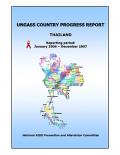
Resource | Publications,
As per follow-up to the United Nations General Assembly Special Session (UNGASS) Declaration of Commitment on HIV/AIDS in 2001, Thailand not only contributed successfully to the submission of the 2008 Country Progress Report to UNAIDS for monitoring results following the country’s commitment throughout the past two years, it also seeks to develop the mechanism in monitoring the country’s progress, with the continual participation of diverse sectors ranging from the government, non- governmental organizations, civil society, academics, international organizations and development partners. Such a mechanism will entail a national sharing database that is utilizable efficiently for HIV/AIDS prevention and alleviation.
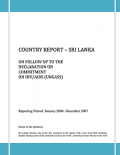
Resource | Publications,
Sri Lanka remains one of the few countries in the region with a low level HIV epidemic despite sharing some of the conditions such as sex work, networks of men who have sex with men and large population of heroin users. In addition, many infections that have been identified are associated with overseas work.
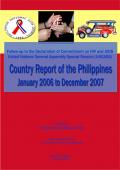
Resource | Publications,
The Philippines began planning for its Country UNGASS Report (January 2006 to December 2007) as early as June 2007 and earnestly begun preparation in July 2007 with the widest inclusion of various stakeholders from government, donors, civil society, and communities of most at risk populations and people living with HIV and AIDS.





